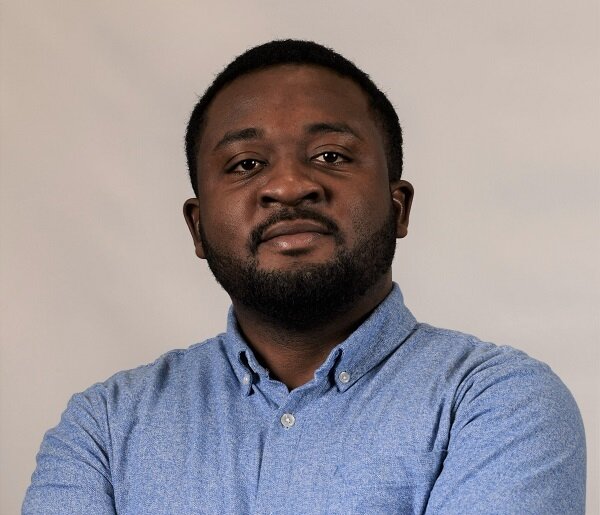By Elaine Smith
After returning to in-person teaching following the COVID-19 pandemic, some faculty at York University have continued to embrace technology as a useful and interesting adjunct to their courses. Alejandro Zamora, Mojgan Jadidi and Damilola Adebayo teach disparate topics, but each has decided that technology-enhanced learning benefits their students.
Zamora, an associate professor of Hispanic studies at Glendon College, first used digital technology in a Hispanic Geopoetics course in 2018. The class was studying the work of Luis Cernuda, a poet from Seville, Spain, and he led them on a field trip to explore the spatial memory of a place recreated in his poetry throughout a life of exile. Afterward, he had students collaborate on a web-based multimedia project about the poet and about their field experience.



“I liked how these projects made students collaborate and engage with the community,” Zamora said. “They learned to create, analyze, synthesize and collaborate. I loved the pedagogic power of digital humanities courses.”
He now incorporates digital projects into all his courses that have field components, such as the summer courses he teaches at the University’s Las Nubes Campus in Costa Rica. Some of the courses have established projects to which students contribute, while in others, the class conceptualizes and creates a project from scratch. He is open to students who propose digital projects in his other courses, too, such as blogs or videos as assignments.
“Literature is often text-based, so students limit their experience to textual analysis and discursive thinking,” Zamora said. “These projects make the students think visually, so they help me enhance their learning experience. The course immediately becomes experiential, because the students realize that they can put what they have learned to work in practical ways and that they can mobilize knowledge.”
He has also turned to globally networked learning to bring together students from Glendon with their counterparts in Colombia, virtually, for joint sessions about Gabriel García Márquez’ novel One Hundred Years of Solitude.
“This was the first time we had a globally networked learning component as part of the [Hispanic Geopoetics] course and it was fantastic,” Zamora said.
Jadidi, an associate professor of civil engineering at the Lassonde School of Engineering, uses gaming and virtual reality tools to assist her students in learning engineering and surveying principles. Previously, she created an extended reality sandbox (XR Sandbox) teaching tool that builds on an augmented reality physical sandbox (AR Sandbox) devised by faculty at the University of California, Davis. It allows students to mimic climate conditions online, such as floods, to see their impact on roads and bridges, for example.
“The XR Sandbox is an inclusive, diverse learning environment that helps students to retain information,” she said.
Recently, Jadidi and 11 colleagues received an Academic Innovation Fund (AIF) grant to develop gaming and XR tools that will assist students in learning complex engineering concepts. To do so, they will employ XR and gaming technologies, as well as Visual Verbal Integrated (VIVID) storytelling technology.
“We have observed that engineering students become more disengaged from their learning, particularly when learning contents that are complex, theory heavy, nuanced and unfamiliar,” said Jadidi. “Technology is advancing very quickly and students are comfortable using it, so we want to give them tools to see different dimensions of engineering problems and enjoy learning in a different way.”
For example, one of the tools will allow the students to virtually fly drones over a 3D model of the York University campus so they can understand a drone’s movement and rotation. They’ll be learning about drone assembly, system co-ordination, testing and flight, all within a virtual space.
“It’s all about providing students more opportunities for learning,” said Jadidi. “They’ll be able to learn independently, too; they won’t be limited by time.”
Adebayo’s first opportunity to teach a course occurred in 2020, during the COVID-19 pandemic. As a PhD student at Cambridge, teaching wasn’t required, so he was forced to acclimate simultaneously to teaching and the virtual environment.
“I was plunged into the deep end,” said Adebayo, an assistant professor and historian of anglophone West Africa.
Luckily, having grown up with technology, Adebayo quickly found his feet.
At York, he started off teaching HIST 2750 (African History from 1800 to the Present) in a HyFlex classroom that is designed to provide remote learners with the same classroom experience as those present in person, and is also recorded for reviewing. It required some tinkering with technology to provide an equivalent experience.
For example, Adebayo is learning to use a tool that allows him to embed quizzes into lectures so that anyone watching virtually can’t continue unless they participate; the video simply stops.
An AIF grant has allowed him to purchase a professional camera and a green screen so he can improve the video quality of lectures, no matter the platform a student is using to view it. He has also learned to add closed captioning that is synchronized with the lecture.
“I believe in access, so the easier it is for my students, the better,” Adebayo said. “I want lectures for students to be mobile-friendly so students can participate on their computers or mobile devices.”
Since the course will be delivered remotely this year, Adebayo has also sought out a means to prevent students from using chat bots to do their assignments.
“I assign short presentations to the students, that they record and send to me; then we meet and discuss the substance of the presentation,” he said. “Even if they’re employing AI tools, they still need to know the content.”
The pandemic opened many eyes to the possibilities of technology in the classroom and, as illustrated, the students benefit.


